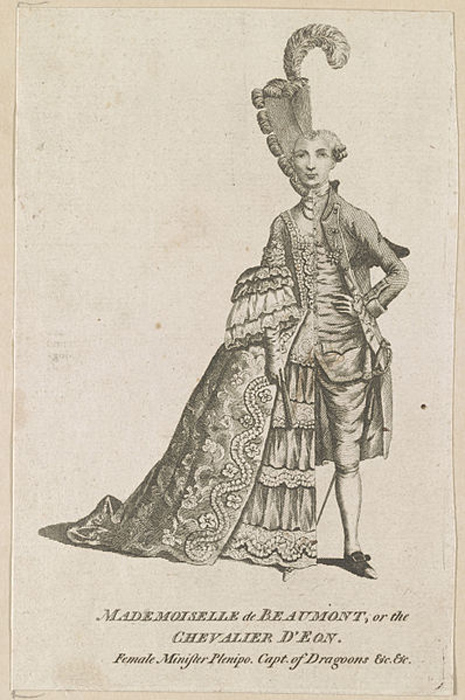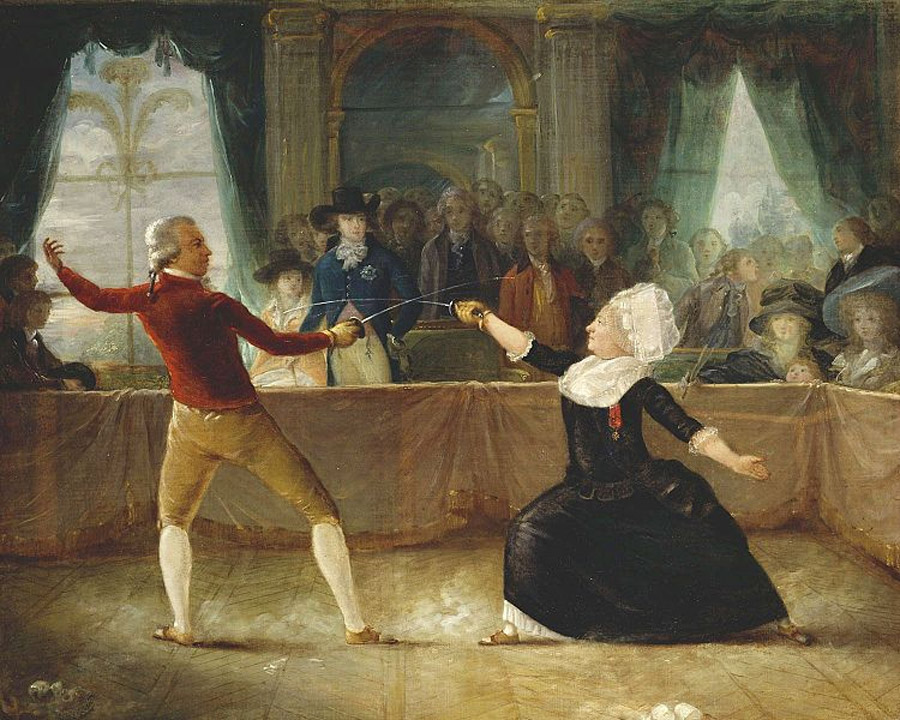Chevalier D’Eon was a French soldier, diplomat, and spy who lived half of his life as a man and later became openly female. The story may sound confusing, but it is highly intriguing.
Early Life Of The Chevalier
D’Eon was born on October 5, 1728, in Tonnerre, Burgundy, in France. He belonged to a noble family, but not a rich one. His father, Louis d’Eon de Beaumont, served as the King’s director and attorney. His mother was the daughter of a Commissioner-General to the armies.
Most of his early life remains obscured due to the lack of a trusted source. There is an autobiography of D’Eon, The Interests of the Chevalier d’Éon de Beaumont, but it had been ghostwritten and the contents appear to have been embellished.
D’Eon excelled in school in his early life and moved to Paris for further studies in 1743 before he was 15. He then went on to graduate in Civil law and Canon law from Mazarin college in 1749.
- Who Was Aleister Crowley…Occultist, Satanist, and British Spy?
- What Became of Anne Bonny, Irish Pirate of the Caribbean?
After dropping out from college at the age of 21, he also went on to pursue writing, and D’Eon went on to be recognized as a political writer at a very young age. In 1756, through family connections and education, he became the secretary to the French Ambassador.
The King’s Secret Service
While D’Eon joined the French Embassy, his role as a secretary in the civil service was only a front for his greater service to the motherland. He were also groomed as a member of the “King’s Secret,” a network of spies and undercover diplomats tased with espionage against neighboring countries and governments.

This service order was established in the 1740s and inducted Chevalier D’Eon as a member too. This secret service was indeed so secret that even the French Foreign Ministry did not fully know it. Sometimes, the secret service and the ministry acted against each other.
Chevalier D’Eon’s brief was not easy. He was charged with infiltrating the Russian Empress Elizabeth’s court to encourage the Empress to stay in favor of the French. Another objective of the mission was to get the Empress to support the installation of the French King’s cousin on Poland’s throne. This was a move against the Austrian Habsburgs, and through them, the British.
This then resulted in the British only allowing women and children to pass into Russia so that France could not conspire with the Pro-French Russian Empress. According to Chevalier D’Eon’s own accounts, he went into Russia dressed convincingly as a woman named Lia De Beaumont, serving as the maid of honor to Empress Elizabeth upon arrival. Although there is no particular evidence to this account, D’Eon’s later transformation into a woman makes its possibility strong.
D’Eon likely saw his gender swap in Russia as simply a disguise. After successfully completing his mission in Russia, he came back to France and served as a Dragoon in the French Army during the Seven Years War between Britain and France.
Chevalier D’Eon Goes To England
In 1762, D’Eon was appointed as secretary to the French Ambassador to England. It is believed that he played a big role in negotiating the peace talks with Britain after the War ended the following year. Then at the age of 35, he was admitted into the royal order of Saint Louis and added the title “Chevalier” to his name.
Later, D’Eon was placed as the minister plenipotentiary to keep an eye on the English coast. He aimed to find a place from where the French could conveniently invade England. He also cultivated good relations with the opposition members of the British parliament to infiltrate domestic British politics.
While Chevalier d’Eon was a charmer and an intelligent person, his expensive tastes started becoming a sore point for the government who was funding them. He was reprimanded many times for importing wine and was also often at odds with his superior, the Ambassador Comte De Guerchy. A power struggle developed between the two.

In October 1763, Chevalier D’Eon was fired from his job on the grounds of insolent behavior. D’Eon was fearful that he might be sent to the Bastille if he returned to France. Although King Louis XV ordered his extradition, D’Eon used his position and stayed in Britain.
Exile and Danger
The British foreign minister also allowed special dispensation for D’Eon to stay as a private citizen. But this did not stop the French Foreign ministry trying to kidnap and arrest him on various occasions. D’Eon kept these attempts at bay, warning that he would make all secret dealings as the King’s agent public. In fact, he followed up on this threat, publishing a book, the first in a series, containing the communications he made as a minister.
The move was shocking and resulted in giving D’Eon a kind of celebrity status. The publication made them a scandalous figure and he became famous in public circles and households. Since he was now considered a British public figure, the French took advantage of this new position.
D’Eon was therefore given the reputation as an enemy of the French monarchy. However, the truth was more subtle: he continued to work for the French and infiltrated the different layers of British Society. D’Eon did not publish any further communications. He stayed in the King’s service for the next decade even after the very public fallout with the French.
A New Direction
After the death of Louis XV in 1774, D’Eon signed a transaction in 1775 under Louis XVI that essentially brought them back to French soil, on understanding that he gave up his passport and other papers. After signing the document, D’Eon was publicly recognized as a woman and lived his life as a woman in France. This appears to be a formal recognition of a situation already in place: the English and the French both unofficially saw D’Eon as a woman from the 1770s.

This only stoked the public’s curiosity. In the 1770s, the situation grew so inflamed that people took bets on D’Eon’s gender. Because of the public attention, D’Eon could not leave the house without arms.
Such was the debate that the French government itself started an investigation in 1772. The spy relayed the information that Chevalier D’Eon was indeed a woman because D’Eon had spoken to the spy, confirming this. In 1777, D’Eon finally returned to France as a woman and lived the rest of his life as a woman in the King’s court.
Top Image: Portrait of the Chevalier d-Eon. Source: Thomas Stewart / Public Domain.
By Bipin Dimri